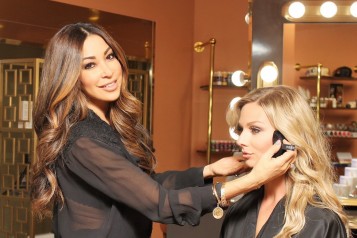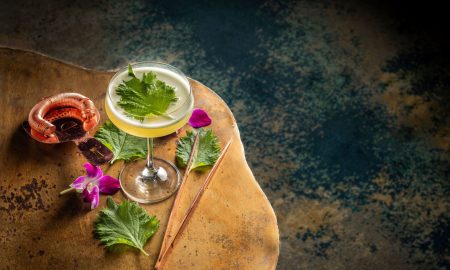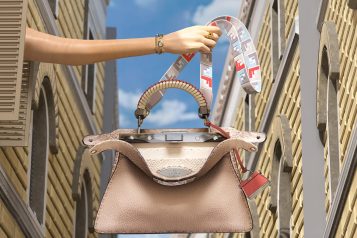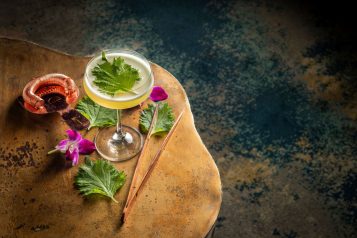
Photo Credit: Dr. Jhonny Salomon
As one of Miami’s most renowned plastic surgeons, Dr. Jhonny Salomon is a perfectionist at heart. As an artist, he is passionate and intrigued by the art of photography and the outlet of creativity it represents for him. Outside of his medical practice, Dr. Salomon is constantly training and exploring the realm of art and photography, and through that has honed his artistic eye and found the art within medicine—a quality that distinctively sets him apart in the medical field. Haute Living caught up with the talented surgeon to discuss new medical techniques within his practice, his artistic background and how art and medicine come together for him.
HL: You have such a diverse cultural and schooling background. Was there a specific reason that attracted you to start your practice in Miami?
JS: I think Miami is a city of the future. Due to its incredible weather and geographic location, Miami is, in my opinion, the “capital of Latin America.” The fact that it has become such a hub for international travelers has really contributed heavily to its beautiful cultural diversity, which I love. After spending nearly 15 years in New England between Boston University and Brown University studying plastic surgery and then completing a fellowship at the University of Texas Southwestern in Dallas on craniofacial surgery, I had to decide where to plant roots for my practice. At the time, Miami was becoming extremely well-known for plastic surgery, and there were many talented surgeons already established here. From back then I felt Miami was a city of the future in so many different areas. The city’s economy, culture, art and plastic surgery scene were at a turning point for a major evolution, and I wanted to be on the forefront of it. I saw it as the best fit for me to grow my practice with such diverse and international influences.
HL: You have recently started using PRP for facial rejuvenation and hair. Can you tell us about the benefits of it and process behind it?
JS: PRP [Platelet-Rich Plasma] has been around for a few years now, and it’s essentially an evolution of the stem cell process. Physicians are using stem cells to treat injuries of the knees and other joints as well as many other illnesses. PRP is what we use most commonly in plastic surgery for facial rejuvenation and hair growth. I often use PRP by itself or in combination with other procedures to maximize the production of facial collagen, resulting in a more youthful appearance. For hair restoration, we inject PRP directly into the functioning hair follicles to stimulate growth in the follicles still present. It truly is magnificent.
HL: Are there any other new medical techniques or innovations you are using in your practice?
JS: We pride ourselves on remaining very innovative and try to add new technologies annually. This year we began combining micro needling with PRP, and we’ve been very pleased with the results. In addition, there are a number of new fillers that have been introduced into the market that we have incorporated into our practice. With regards to lasers, ThermiVa has been a major breakthrough in sexual health for both internal and external vaginal rejuvenation, and we have been very pleased to add it to our practice as well.
HL: How do you ensure your skills and techniques stay competitive within the market?
JS: Plastic surgery is continually evolving, so it’s very important to always remain curious. You have to be knowledgeable of new and cutting-edge technologies while consistently improving yourself and the techniques you employ. We have several surgeons and students visit our practice regularly, and I’m very much engaged in the plastic surgery community, sharing ideas with my colleagues from around the world.
HL: What can a patient expect when first meeting with you? How do you prepare for treating each person?
JS: The first meeting is very important as it sets the tone for the remainder of the relationship between the patient and myself. Patients are already coming to me in a somewhat vulnerable state, addressing an insecurity or something about themselves that has been bothering them for a long time. My goal and the overall goal of my practice is to ensure that the patient feels comfortable and supported from the minute they walk in the door. During the consultation, I try to assess what they are looking for while determining the most natural way to help them achieve their aesthetic goals. It’s a very personal and intimate process.

Photo Credit: Patagonia 2014, Argentina, Perito Moreno, taken by Dr. Salomon
HL: Can you tell us about your philanthropic work, involvement with charities and pro-bono surgeries?
JS: I’ve always believed that when you have a gift, it is your duty to share it with the world. While remaining at the top of your field is important, it’s equally important to offer your services to those who may not have the means to afford it. When there is a real catastrophe around the world where my skills could be utilized, such as the earthquake in Haiti, my immediate response is to make time to go and help. I’ve been involved with the Day of Smiles at Baptist Health since its inception more than 15 years ago, and have also participated in a number of other philanthropic projects involving plastic surgery. Most recently, I received an honorary doctorate diploma from the University of Udabol in Bolivia as a result of my participation in this type of work.
HL: How do art and surgery come together for you?
JS: On so many different occasions I’ve been asked this question, and I continue to refine the answer each time. I think medicine is art to start with. I think everything you master in life becomes an art. I try to reach a level in plastic surgery where the final refinement and the final equilibrium are so precise that it becomes an art. I feel as if I have an artistic soul. So much of my life is centered around art, whether it be through photography, sculpting, painting or in building my collection, that I’ve trained my eye to become more refined. Ultimately, this greater refinement has made me a more skilled plastic surgeon.
HL: Throughout all that traveling for photography, do you have a favorite memory?
JS: All of my travels have been very special. Before I take a trip, I spend so much time immersing myself into learning about the culture, religion and history to better understand the people and their customs. Some of my favorite destinations have been Africa, India and Patagonia; Africa is such an awakening experience, India a very spiritual one and in Patagonia you feel as if you’re at the edge of creation.
HL: Do you have a favorite memory or highlight from previous Art Basel years?
JS: I’ve watched Art Basel evolve so much over the years and love its energy. It’s a time when Miami becomes the center of the art world, and as a collector, this is all so special.
HL: What is the greatest lesson you have learned throughout your years of practice?
JS: My patients have really taught me so much over the years, and my practice has helped me look at life in a more spiritual way. I believe every interaction is an opportunity to connect on a very deep level, teaching me greater compassion, which in turn makes me a better human and a better surgeon for my patients.




















